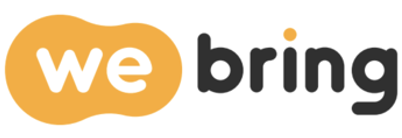When buying a used car, the first things that usually come to mind are the car model and price. However, the payment method for a used car is just as important. Most people assume “paying in cash is the simplest option,” but if preparing a large amount of cash is difficult, or if financial products are used wisely, financing can actually be more advantageous. For foreigners, Korea’s financial system and credit review process may seem complicated, making leasing or installments appear challenging—but in reality, as long as visa status and credit requirements are met, more and more cases are becoming possible.
In this article, we will compare three major used car payment methods—leasing, installment (auto loan), and cash. We’ll explain the pros and cons of each option along with tips for foreigners who may be eligible. If you make good use of financial products based on your personal situation, you can reduce the initial financial burden and maintain stable cash flow, making it a practical and beneficial choice.
Cash Payment: Most Straightforward, But Heavy on the Budget
1) Advantages: Simple, No Interest
Cash payment means paying the full price of the car upfront, making the vehicle immediately yours. Since you don’t use financing or leasing, there are no additional interest or fees, and no credit check is needed. Once the contract is signed and the payment is made, the process is complete—fast, simple, and independent of your credit score. Especially with used cars, which are generally lower in price than new cars, paying in cash or via bank transfer can be relatively manageable.
2) Disadvantages: Heavy Upfront Cost and Reduced Liquidity
The biggest drawback of cash payment is the large lump-sum expense. For example, if you purchase a used SUV for 20 million KRW (approx. $15,000), you’ll need more than 22 million KRW once you add acquisition tax, registration fees, insurance, and maintenance. For foreigners, this can be particularly challenging if living expenses and savings in Korea are limited. Furthermore, until the car is resold, your money is essentially locked in the vehicle, making immediate cash recovery difficult if an urgent financial need arises.
Installments (Auto Loan): Gradual Payments
1) Advantages: Lower Initial Burden, Full Ownership
With an installment plan (auto loan), you borrow the car price from a finance company and repay it monthly. You typically pay a down payment and then repay the remaining balance over 12–60 months. Interest rates for used car loans can be slightly higher than for new cars, but the biggest benefit is a significantly reduced initial burden.
Importantly, even when using an installment plan, the car is registered under your name. While the finance company may place a lien until full repayment, you are the official owner. Since you’re paying in manageable monthly amounts while driving the car, it allows flexible cash flow management according to your financial situation.
2) Disadvantages: Interest Costs and Credit Checks
Installment plans naturally involve interest payments. For example, on a 15 million KRW (approx. $11,000) car, interest rates of 5–10% per year may apply, and the longer the term, the higher the total interest. Foreigners may also need to provide extensive documentation such as credit card history, bank accounts, or employment certificates. Lenders check your visa status, income, and job details to determine your borrowing limit, so the process can be time-consuming.
Another downside is the monthly repayment obligation. If you suddenly return to your home country or experience financial difficulties, it may be hard to keep paying. Even if you cancel early, you’ll still owe the remaining balance, and if you sell the car, the loan must be fully repaid before ownership can be transferred. This highlights the importance of careful financial planning before committing.

Leasing: Long-Term Rental Focused on Usage
1) Advantages: Minimal Upfront Cost, Easy Management
Leasing involves a finance company purchasing a car and renting it to you for a set monthly fee. At the end of the lease, you can either return or buy the car (additional payment required). Even as a foreigner, if you are employed or run a business, you may qualify. The biggest benefit is that almost no upfront cost is required. Taxes and registration are covered by the leasing company, and depending on the contract, insurance and maintenance can also be included, making it convenient.
For business owners, lease payments may be treated as business expenses and reduce taxable income. After returning the car at the end of the lease term, you don’t have to worry about depreciation—making this attractive for foreigners who want a car without tying up money, or those staying only short-term in Korea.
2) Disadvantages: No Ownership, No Resale Value
A lease does not mean ownership—it is strictly a rental agreement. During the lease term, ownership remains with the leasing company. You can choose to buy or return the car after the contract ends, but ending early may result in heavy penalties. Insurance, modifications, and maintenance may also be restricted under the lease agreement, which limits customization or exporting the vehicle overseas.
Although monthly payments may appear more affordable, they actually combine financial costs (interest) and depreciation. As a result, leasing can end up being more expensive than installments in the long run. For foreigners, it is essential to find a leasing company that provides contract details in English or other languages. Additionally, if you leave Korea before the lease ends, canceling the contract may be complicated and costly.
Used Car Payment Requirements for Foreigners
1) Foreign Registration Card and Visa Status
If you plan on using an installment or lease, you must be staying legally in Korea with adequate remaining visa validity. Most financial institutions require at least six months left on your visa and proof of income (such as pay stubs or employment certificates). With a short-term tourist visa, financing a car is virtually impossible.
2) Korean Credit Card or Bank Account
Both leasing and installment plans require monthly auto-payments, so a Korean bank account is mandatory. For credit evaluation, records such as credit card usage, bank statements, and salary deposits can be critical. Without these, you may need a guarantor, so preparing in advance is important.
Comparing All Payment Methods
Cash: Simple, no interest, but requires a large initial outlay. Depreciation risk is entirely yours.
Installments (Auto Loan): Reduces upfront cost and ensures ownership, but includes interest expenses. Monthly fixed payments are required, and terms for early repayment must be checked.
Leasing: Minimizes upfront cost and offers convenient management. However, ownership stays with the leasing company, and early termination or purchase at end of contract may involve extra fees. While depreciation risk is avoided, total costs can exceed those of an installment plan.
For foreigners, the key factors are visa duration and available credit documentation. Choosing the best option requires aligning your financial situation and timeline with the right payment plan.
Conclusion: Your Priorities Are the Key
Ultimately, choosing how to pay for a used car depends on the balance between three factors: upfront cost, long-term financial burden, and ownership. If your stay in Korea is short and you don’t have enough savings, leasing or installments may seem convenient—but the interest and fees can become a burden. On the other hand, if you have sufficient funds and prefer to avoid complex paperwork, cash purchase is the simplest route.
For foreigners, the requirements for visa status and credit documentation can make cash the easiest option. However, if you have proof of employment, banking history, and a long-term residency plan, an installment or lease may be well worth considering. Whether you want full ownership or simply need a car for a temporary stay, evaluating your lifestyle and future plans is the key to making the best decision.
A car is both a means of transportation and a major expense. Choosing the wrong payment method can lead to unnecessary interest costs and financial risks. Always ensure you understand the terms and conditions thoroughly, compare products carefully, and seek advice from experts or trusted acquaintances. Doing so will make the process of buying a used car in Korea much smoother and stress-free.


WeBring Service : Provides personalized services to foreigners living in Korea
Exclusive offer: Introducing foreign car rental in Korea, WeBring-SoCar

